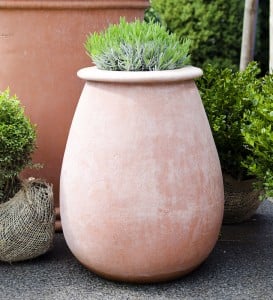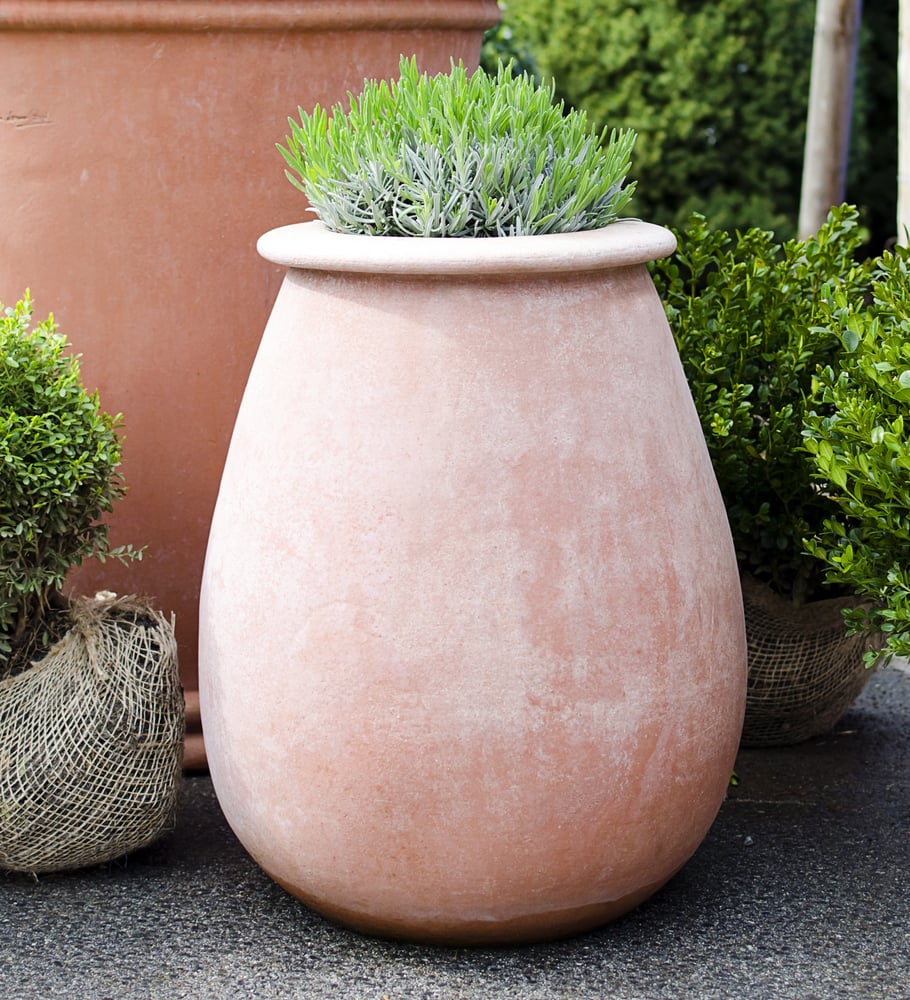 Stone planters may be beautiful, but they are also bloated with drawbacks. There are a number of reasons that stone planters can cause more headaches than they are worth. If you are thinking about investing in stone planters, we must warn you there are a few things you should know before casting the first stone. In this blog we detail the top 7 drawbacks to stone planters.
Stone planters may be beautiful, but they are also bloated with drawbacks. There are a number of reasons that stone planters can cause more headaches than they are worth. If you are thinking about investing in stone planters, we must warn you there are a few things you should know before casting the first stone. In this blog we detail the top 7 drawbacks to stone planters.
1. Stone Is Very Heavy
What is heavier, a one-pound bag of feathers, or a one-pound bag of stones? Of course the answer is that they are equal because they are both one-pound, but this popular riddle often fools young children into answering, ‘the feathers!’ This is because we all know how heavy a bag of stones would be, especially compared to a bag of light fluffy feathers.
Now that you are imagining how heavy stones are, add the weight of water, soil, and a plant to the mix and you can see where this is going, somewhere rather heavy. Stone planters can easily go from heavy to way too heavy to relocate, and as a result they are often left out in a snowstorm or in an undesirable location. This isn’t good for your planter or your plants.
The actual weight of stone planters often goes unrealized. Take 2 planters that are same exact size, shape, and level of attractiveness, one of these planters is resin and the other is stone. The resin planter will weigh 35 pounds, and the same planter made of stone is going to weigh an incredible 600 pounds. This not only impacts how easy the planter is to move once situated in place, but it also greatly increases shipping and delivery costs as well.
2. Stone Is Prone To Stains
If you picture a run down neighborhood you can almost visualize the stained stone planters that line the streets. No matter how hard one tries, the stains that inhibit a stone planter cannot typically be removed. Overtime outdoor planters are prone to stains, either from birds constantly using the planter as a poop deck, or because rebels come by with their spray cans late one night. Regardless of the cause, a stone planter is going to stain, absorbing the colors like a sponge.
Resin is one of the only planter materials actually resistant to all kinds of stains, including paint. In fact, you can remove stains from resin planters using a sponge and basic store-bought cleaner.
3. Stone Is Not Flexible, It Cannot Expand Or Contract
Once stone is formed together into a planter, it is not meant to fluctuate in size. But when the weather changes from hot to cold, and cold to hot, that’s exactly what is going to happen. Outside and exposed to the elements it’s only a matter of time before a stone planter will crack due to contracting and expanding one too many times. The cracks will start off small, maybe out of sight, but will eventually grow large enough to break the pot.
TerraCast resin has the flexibility to expand and shrink with the changing seasons so that cracks and split pots are never a problem.
4. Stone Planters Are Non-Recyclable
Once stone planters are formed they cannot be recycled and broken down for another use. Once it breaks down in a few years, it will go to pollute a landfill somewhere. If you are looking for a more eco-friendly option, resin planters are made from recycled materials and are recyclable.
5. Stone Is A Very Dense Material
Another issue with stone is that it is incredibly dense. If a golf cart bumps into a stone planter, the dent will be obvious and irreversible. This means it only takes one accident to ruin a stone planter.
The incredible thing about resin is that it is 90% less dense than a concrete or stone planter, meaning it can withstand a lot more impact without actually breaking.
6. Stone Planters Are Expensive
Stone planters are big, bulky, heavy and equally as expensive. So not only will you have to replace your stone planter within a short amount of time, but it will cost you more to buy it the first and second time around.
7. Stone Is Porous
Due to the porous nature of stone, the elements can seep right inside of your planter, causing damage from the inside out. Porous products will always end up warped by the weather and are more susceptible to corrosion. If left outside, as most planters are, your stone planter will only get closer to its demise with each passing day. If you really want a planter than can stand up to the elements, you want to go with a non-porous planter.
A basic breakdown of the drawbacks to stone planters:
- Expensive
- Heavy
- Porous
- Single use, non-recyclable
- Prone to cracks and signs of weathering
Resin: The Clear (And Green) Planter Choice
We keep mentioning resin, have you noticed? That’s because it is one of the strongest materials you can use for planters; in fact we argue it is THE strongest. The benefits to resin planters outweigh the benefits to stone planters any day. While stone planters are beautiful, and impossible to steal since they weigh hundreds of pounds, they are loaded with drawbacks. Resin, on the other hand, is bloated with benefits, including:
- Eco-friendly, made with recycled materials and recyclable
- Non-Porous and durable
- Resistant to weather and wear and tear, including graffiti
- Affordable
- Lightweight
Read more on why resin is superior.
Buy Resin, Save Money
Another awesome thing about resin is that it can be crafted to look just like your favorite stone planter. Offering you the look you are seeking at a more affordable price, not to mention you won’t have to replace it any time soon.
TerraCast Products creates genuine resin planters that are not only made to last, but are proven to do so. For over 30-years we have produced the highest quality planters, lighting, benches, and more. Check out our unmatched selection today!

